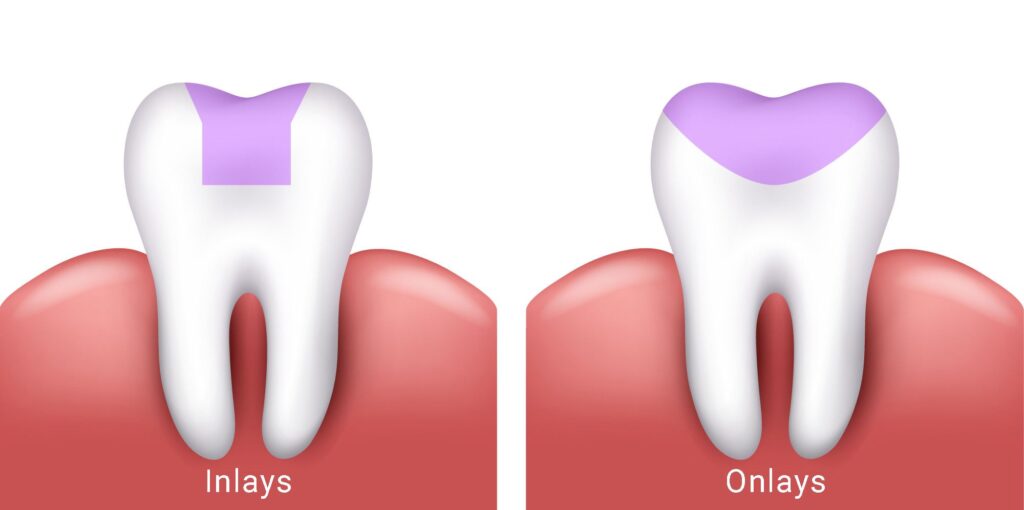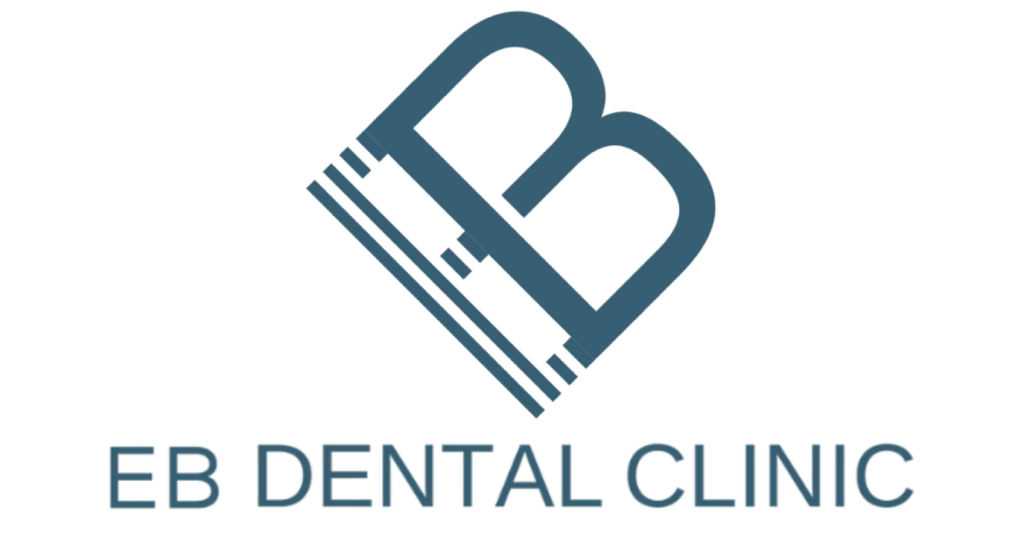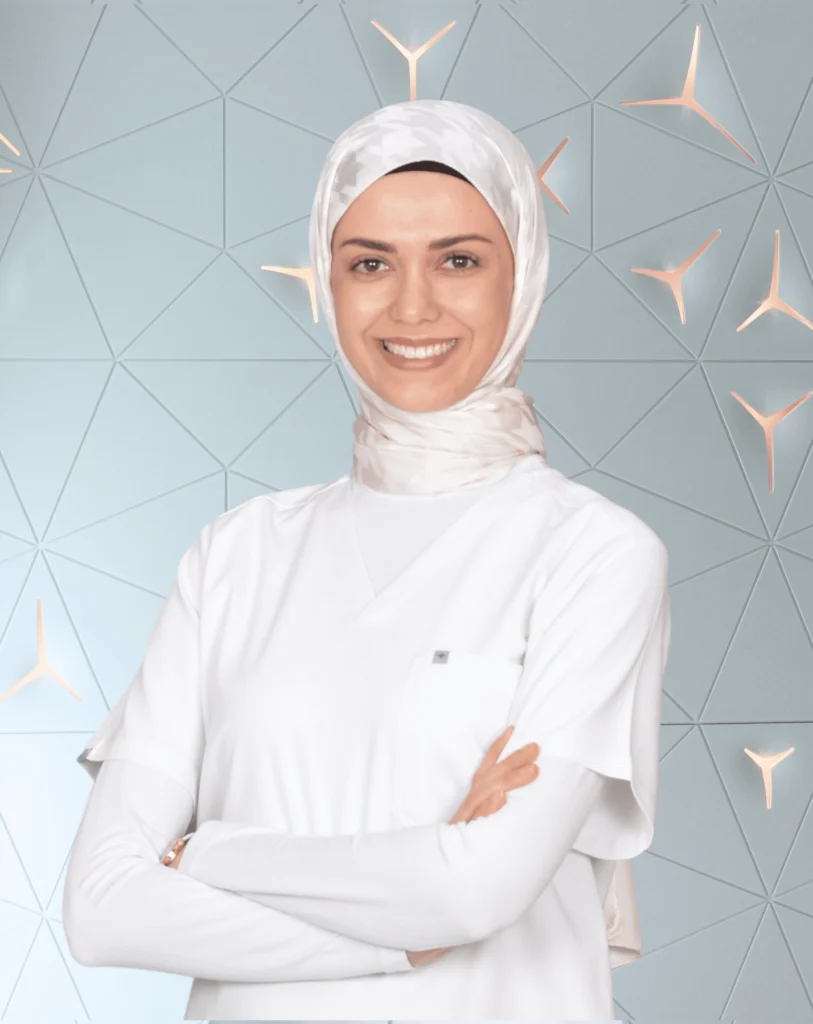Our Services
Our Contact Information
- Nisbetiye, Fecri Ebcioğlu Sk. No: 3E, Beşiktaş/İstanbul
- +90 544 152 34 34
- infodental@eb.clinic
- Monday / Saturday: 9:30 / 19:00
Inlay and Onlay Restorations

Inlay and Onlay Restorations
In cases where tissue loss occurs in teeth, inlay or onlay restorations that increase supporting tissues can be preferred in order to prevent deformation of the remaining tissues. They differ from filling materials in that they are harder and more durable, and from full crown dentures in that they protect the remaining tooth tissue. For this reason, they are advanced restorations applied as an alternative to traditional fillings and crown dentures.
What are Inlay-Onlay Restorations?
They are durable and aesthetic restorations that are produced specifically for each tooth, where the measurement models are transferred to the laboratory environment with three-dimensional scanners to be used in the teeth where fillings are planned. They are usually made of materials such as porcelain. While onlay restorations cover one or both ends of the teeth, inlay restorations are located in the cavity of the teeth, more like fillings.
What are the advantages of inlay-onlay restorations?
5.3. It compensates for the loss of material in teeth due to reasons such as caries by supporting it with durable materials. Thanks to the three-dimensional digital measurements taken for each tooth, precise and fully compatible restorations can be made. By preventing further cutting of the teeth to make a crown prosthesis, the remaining natural tooth tissues are protected. Since the restorations made are quite resistant to biting and chewing forces, long-lasting prostheses can be made. Thanks to the harmony of the edges of inlay-onlay restorations and the smoothness of their surface features, teeth can be easily brushed and cleaned. The applied restoration adapts very well to the tooth tissue in terms of color and light transmittance, thus aesthetically satisfying results can be obtained. During the production phase, the surface anatomy of the teeth is studied in detail in a laboratory environment and processed correctly, thus achieving an aesthetic appearance compatible with the cavity of the teeth. The inlay-onlay restorations produced are bonded to the tooth cavity with special adhesives that establish a chemical bond with the natural tissue of the teeth, thus ensuring the longevity of the restorations and minimizing the risk of new caries by preventing edge leakage. They have high contact and harmony with neighboring teeth and are custom-made restorations that preserve healthy tissues without the need for material loss, thanks to their good compatibility with the remaining dental tissues.
Can Inlay-Onlay Restorations Be Applied?
Inlay-onlay restorations are preferred in cases where traditional fillings cannot provide sufficient support for the teeth. They can be applied to protect the remaining tooth tissue in cases where teeth become more fragile, such as during root canal treatment. In cases where crown prostheses are required, if there is healthy tooth tissue, these special and tissue-compatible restorations can be selected in order not to lose this tissue.
How Are Inlay-Onlay Restorations Applied?
First, a clinical examination is performed to evaluate whether the teeth are suitable for inlay or onlay restorations. After the decay in the dental tissues is cleaned, the detailed measurement of the tooth is transferred to the digital environment and shared with the laboratory. The dimensions and color harmony of the restoration to be made can be arranged with the planning made on the computer. A temporary filling is made and the transfer of the inlay or onlay restoration is awaited. In the next session, the harmony of the restoration on the tooth is checked and then the restoration is bonded to the tooth surface with special tissue-compatible adhesives. The process is completed by making the necessary polishing and height checks.
What Should You Know After Inlay-Onlay Restorations Are Applied?
Routine oral care does not need to be changed after inlay-onlay restorations are applied. Tooth brushing, flossing and mouthwash should be continued as recommended by doctors. In general, restorations and other dental needs should be monitored every 6 months.



